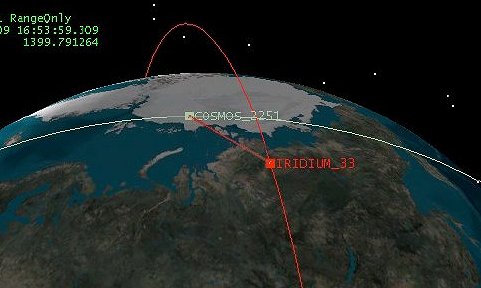 |

|
COLLIDING SATELLITES: (Feb. 14, 2009) For the first time ever, two large satellites have collided in Earth orbit. It happened on Tuesday, Feb. 10th at 1655 UT, when Kosmos 2251 crashed into Iridium 33 approximately 800 km over northern Siberia. The relative speed of impact was about 10 km/s or 22,000 mph. Both satellites were destroyed.
U.S. Strategic Command is tracking hundreds of satellite fragments. Within days of the collision, the debris swarm spread around both orbits. Experts characterize the distribution as a pair of "clumpy rings"; one ring traces the orbit of Iridium 33, the other traces the orbit of Kosmos 2251. This injection of debris substantially increases the population of space junk at altitudes near 800 km. Collisions are now more likely than ever. Fortunately, the International Space Station orbits Earth at a much lower altitude, 350 km, so it is in no immediate danger. The Hubble Space Telescope is not so safe at 610 km. Researchers are studying the make-up and dynamics of the debris to estimate when fragments will begin to drift down to lower altitudes. FIREBALLS VS. SATELLITE DEBRIS: A series of bright fireballs observed in Texas, Kentucky and Italy over the weekend of Feb. 13th were attributed by some news sources to debris from the satellite collision. Not true. The fireballs were natural meteoroids: full story. ©2009 Spaceweather.com.
All rights reserved.
|
|
